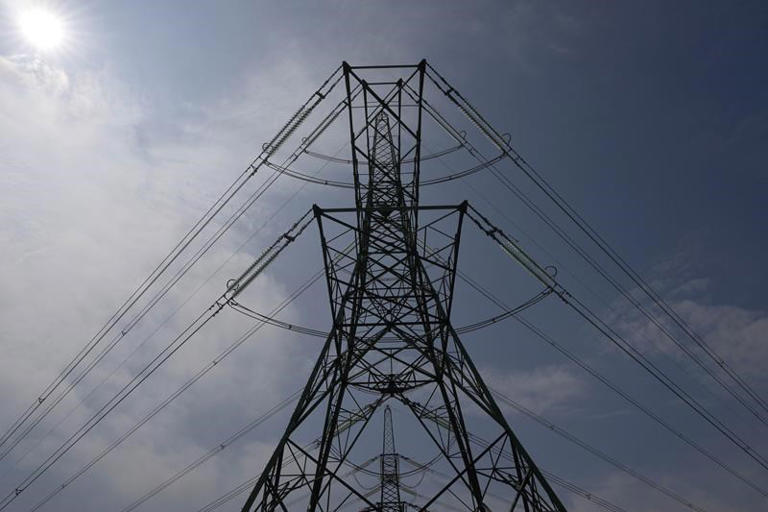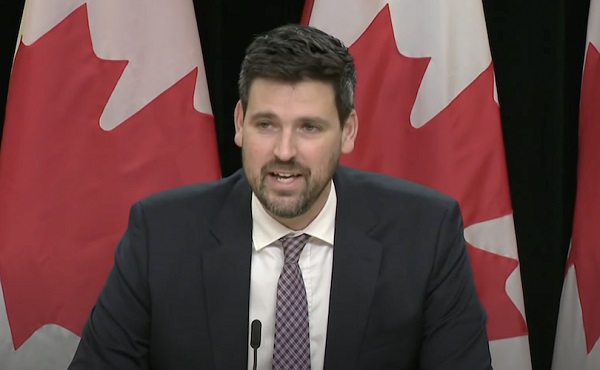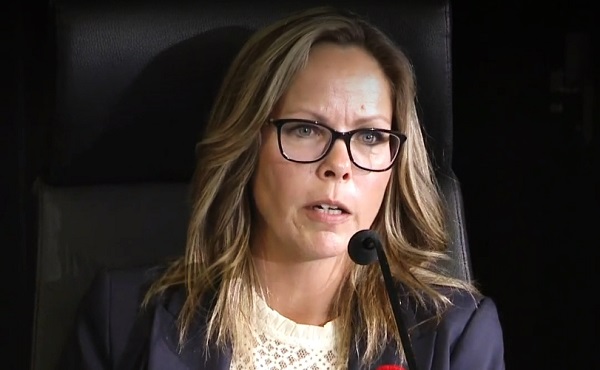Alberta
Federal electricity regulations threaten Albertans with high costs and power outages

Alberta responds to dangerous federal electricity regulations
Alberta has submitted detailed analysis showing why proposed federal regulations will threaten the province’s electricity grid.
Alberta is rapidly reducing emissions and targeting a carbon-neutral grid by 2050. Electricity emissions have declined by 53 per cent since 2005 and the province will have phased-out all coal generation by early 2024.
However, in August, the federal government released its draft Clean Electricity Regulations, which propose rigid rules to try and achieve net-zero electricity by 2035.
Based on expert analysis and industry consultations, Alberta’s government has submitted a detailed response outlining the technical problems with these regulations. The province’s analysis found that these regulations are unrealistic, ineffective and could compromise grid reliability to an unacceptable degree, resulting in the very real risk that Albertans will not have access to an essential service, like power, when they need it.
“These regulations are irresponsible and reckless, setting unrealistic targets and even banking on technologies that don’t exist. They will result in Albertans shouldering an unbearable cost for an electricity system that will no longer deliver the safety, reliability and affordability upon which our lives depend. We will not permit these dangerous and unconstitutional regulations to be imposed upon our province.”
“The standards and enforcement that Ottawa is proposing would put the safe, reliable and openly competitive market of Alberta’s electricity system at risk, all for targets that aren’t feasible or realistic. We cannot allow the reliability of our electricity to be compromised and risk public safety during the coldest months of the year, when people need the power most. We urge Ottawa to abandon these regulations and work with us on a realistic path that aligns with our own emissions-reduction goals.”
Some of the key problems outlined in Alberta’s technical submission include:
Flawed modelling creates unrealistic targets
The modelling tools used by the federal government lack the capability to properly assess Alberta’s energy-only market, including the province’s large share of cogeneration. The federal tools also use incomplete proxies to evaluate system reliability, leading them to drastically underestimate the negative impacts.
The federal modelling also relies heavily on technologies that are currently not ready to be deployed, assuming that they will soon be easily or quickly available. As a result, the federal modelling offers an unreliable and inaccurate picture of the costs, impacts on reliability and outcomes of these regulations. With better modelling, the federal targets would be unachievable.
Unachievable standards
The regulations propose unachievable emission standards, with limited flexibility and using a rigid approach that will not work. The standard is also based on unproven design specifications that will be very challenging for operators to meet, even under optimal conditions, and potentially impossible given the operational variability that occurs in electricity grids on a daily basis.
Notably, Ottawa’s standard is significantly higher than those proposed in the United States in May. Standards need to be based on actual performance.
Creating a retirement cliff
The proposed regulations set an end of prescribed life of 20 years, despite the typical operating life of natural gas units being closer to 45 years. This will create stranded assets and massive retirement “cliffs,” as large numbers of natural gas facilities go off-line.
Approximately 55 per cent of Alberta’s existing and approved natural gas generation installed capacity would be subject to the federal emissions standard by 2035. The unnecessary retirement of best-in-class natural gas units would have massive negative impacts on Alberta’s electricity system.
A one-size-fits-all approach won’t work
It is clear that the federal government drafted these regulations based largely on the electricity systems of Canada’s three largest provinces, which primarily rely upon hydroelectricity and nuclear energy.
Regional differences must be recognized, including flexibilities for those jurisdictions most negatively affected by the regulations. When Ottawa exempted home heating oil from the carbon tax, they recognized the need for this flexibility. Alberta and all provinces deserve the same consideration.
Flawed understanding of natural gas
Alberta currently relies on natural gas for more than 70 per cent of its generation. Alberta’s grid reliability is maintained through natural gas generation to backup and balance intermittent sources of power such as wind and solar. Considering the seasonality of renewable resources, Alberta anticipates the need for efficient high-capacity abated natural gas units for decades to come.
The regulations are so rigid and strict that they will effectively make it economically unviable for companies to build and operate natural gas facilities, including abating emissions through carbon capture, utilization and storage (CCUS).
Inflexible and punitive compliance options
The draft regulations are unnecessarily punitive with inflexible compliance options. As written, generators must not emit or they could face criminal penalties under the Canadian Environmental Protection Act, which includes a threat of incarceration. The regulations also increase red tape, increase costs, and offer very little flexibility for industry.
Limiting new technologies
The proposed federal electricity regulations will limit the adoption of important new technologies like hydrogen and CCUS by setting unproven and unrealistic performance standards for facilities. This imposes high costs, introduces investor risk, and creates challenges such as older facilities not being able to upgrade or retrofit new technologies. The result will be added costs and grid reliability risks.
Risks to reliability and safety
Alberta requires reliable electricity power in periods when intermittent sources are not generating. In December 2022, the 5,000 megawatts of installed renewable capacity generated as little as 187 megawatts of energy at one point during a period of cold weather with little wind or solar generation. Natural gas was needed to keep the province from experiencing blackouts.
The proposed allowable peaking provisions – needed to ensure that power is available at any time, under any weather conditions – will result in Alberta not having enough power available when needed most. This is dangerous and irresponsible. The proposed low annual-run-hour limit and emissions restrictions do not enable natural gas assets to respond when needed to increasing demands and the variability of intermittent generation.
A ridiculous approach to emergencies
The proposed treatment of emergencies is unacceptable. It is untenable for the federal government to require post-emergency sign-off by a federal minister. Alberta’s provincial system operator knows best when we have an emergency, not politicians in Ottawa. Provinces must have flexibility to call on generators during emergencies to protect the safety and security of families and businesses, without the threat of punitive action on system operators or generators.
Inadequate financial support for those hit hardest
The federal government released the draft regulations without providing the financial supports needed to enable this transition. Any claims otherwise are false. Federal modelling indicates the regulations will cost $58 billion – since 60 per cent of the net costs will fall on Alberta, the province should receive 60 per cent of the necessary federal funding. Also, the $58-billion figure is likely incorrect as it’s based on flawed modelling and does not adequately consider the distribution and transmission and other costs that will be required. Other third-party assessments further estimated the costs reaching into the trillions.
Next steps
Alberta continues to call on the federal government to respect jurisdictional authority and the enshrined rights and responsibilities of the provinces. The Supreme Court of Canada’s decision on the Impact Assessment Act confirmed the unconstitutionality of the federal government’s ongoing efforts to interfere with electricity and natural resource sectors of all provinces.
The Alberta-Ottawa working group continues to discuss how to bring Ottawa’s efforts to achieve carbon neutrality in the economy in line with Alberta’s Emissions Reduction and Energy Development Plan. If this alignment is not achieved, Alberta will chart its own path to protect its citizens and economy by ensuring the province has additional reliable, affordable and sustainable electricity brought onto the power grid.
Alberta officials will continue to share technical information and analysis on these regulations with the federal government as required to achieve a more practical and realistic approach.
Quick facts
- Alberta has reduced electricity emissions by 53 per cent since 2005.
- According to Canada’s Constitution, legislating and regulating the development of electricity explicitly falls within the jurisdiction of the province (92A (1) (c)).
- The Alberta Electric System Operator found that Alberta would face disproportionate risk and costs, compared with other provinces, as a result of the federal electricity regulations.
- The Public Policy Forum previously indicated that the cost of the federal electricity approach could be more than $1 trillion and as high as $1.7 trillion.
Agriculture
From Underdog to Top Broodmare

WATCH From Underdog to Top Broodmare (video)
Executive Producers Jeff Robillard (Horse Racing Alberta) and Mike Little (Shinelight Entertainment)
What began as an underdog story became a legacy of excellence. Crackers Hot Shot didn’t just race — she paved the way for future generations, and in doing so became one of the most influential producers the province has known.
The extraordinary journey of Crackers Hot Shot — once overlooked, now revered — stands as one of Alberta’s finest success stories in harness racing and breeding.
Born in humble circumstances and initially considered rough around the edges, Crackers Hot Shot overcame long odds to carve out a career that would forever impact the province’s racing industry. From a “wild, unhandled filly” to Alberta’s “Horse of the Year” in 2013, to producing foals who carry her spirit and fortitude into future generations.
Her influence ripples through Alberta’s racing and breeding landscape: from how young stock are prepared, to the aspirations of local breeders who now look to “the mare that did it” as proof that world-class talent can emerge from Alberta’s paddocks.
“Crackers Hot Shot, she had a tough start. She wasn’t much to look at when we first got her” — Rod Starkewski
“Crackers Hot Shot was left on her own – Carl Archibald heard us talking, he said ‘I’ll go get her – I live by there’. I think it took him 3 days to dig her out of the snow. She was completely wild – then we just started working on her. She really needed some humans to work with her – and get to know that people are not scary.” — Jackie Starkewski
“Crackers Hot Shot would be one of the top broodmares in Albeta percentage wise if nothing else. Her foals hit the track – they’re looking for the winners circle every time.” — Connie Kolthammer
Visit thehorses.com to learn more about Alberta’s Horse Racing industry.
Alberta
Alberta’s licence plate vote is down to four

 |
|
Don’t wait. Cast your vote now and help decide what Alberta’s new licence plate will look like.
– Your United Conservative Team
P.S. Every licence plate on the road is a rolling billboard for Alberta. Your vote helps decide what that billboard looks like. Vote here. |
-

 Agriculture2 hours ago
Agriculture2 hours agoFrom Underdog to Top Broodmare
-

 Health2 hours ago
Health2 hours agoSovereignty at Stake: Why Parliament Must Review Treaties Before They’re Signed
-

 Health12 hours ago
Health12 hours agoCanada surrenders control of future health crises to WHO with ‘pandemic agreement’: report
-

 Business1 hour ago
Business1 hour ago$15B and No Guarantees? Stellantis Deal explained by former Conservative Shadow Minister of Innovation, Science and Technology
-

 Carbon Tax1 day ago
Carbon Tax1 day agoBack Door Carbon Tax: Goal Of Climate Lawfare Movement To Drive Up Price Of Energy
-

 Digital ID1 day ago
Digital ID1 day agoThousands protest UK government’s plans to introduce mandatory digital IDs
-

 Censorship Industrial Complex11 hours ago
Censorship Industrial Complex11 hours agoCanada’s justice minister confirms ‘hate crimes’ bill applies to online content
-

 Automotive2 days ago
Automotive2 days agoParliament Forces Liberals to Release Stellantis Contracts After $15-Billion Gamble Blows Up In Taxpayer Faces










